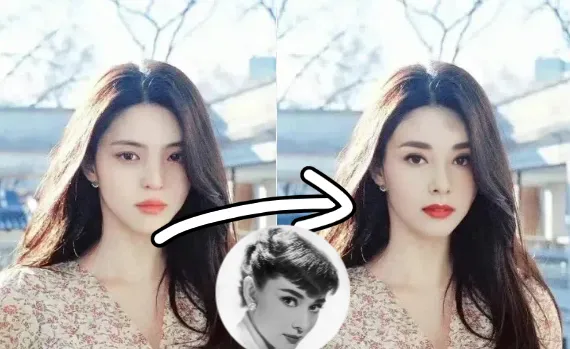Audrey Hepburn deepfakes
Audrey Hepburn, an iconic figure in the history of cinema and a symbol of elegance and grace, has unfortunately become a subject of the disturbing trend of deepfakes.

- Alexander Reed
- 4 min read

 Audrey Hepburn Deepfakes: The Unsettling Phenomenon and Its Implications
Audrey Hepburn Deepfakes: The Unsettling Phenomenon and Its Implications
Audrey Hepburn, an iconic figure in the history of cinema and a symbol of elegance and grace, has unfortunately become a subject of the disturbing trend of deepfakes video face swap free.
Understanding Deepfakes of Audrey Hepburn
Deepfakes, as we know, are synthetic media creations that utilize artificial intelligence algorithms to manipulate and fabricate content. In the case of Audrey Hepburn, her likeness, voice, and mannerisms have been targeted to create false videos or audio recordings that make it seem as if she is doing or saying things she never actually did or said.
To generate an Audrey Hepburn deepfake, vast amounts of data related to her are required. This includes her numerous films, interviews, public appearances, and any available visual and audio recordings. Once this data is amassed, machine learning techniques such as generative adversarial networks (GANs) or variational autoencoders (VAEs) are employed. For example, GANs consist of a generator and a discriminator. The generator attempts to create new content that mimics Audrey Hepburn’s appearance and behavior, while the discriminator tries to distinguish between the real and the fake. Through an iterative training process, the generator gets better at creating convincing deepfakes as it learns from the discriminator’s feedback.
Motivations Behind Creating Audrey Hepburn Deepfakes
- Entertainment Purposes (Though Misguided): Some individuals might create deepfakes of Audrey Hepburn for what they consider “entertainment.” They may envision putting her in fictional or humorous situations that deviate from her real-life persona. However, this form of “entertainment” fails to consider the ethical implications and the potential harm it can cause to her legacy.
- Commercial Interests: There could be those who see a commercial opportunity in creating Audrey Hepburn deepfakes. For instance, using her fabricated image to promote products or services in a way that gives the false impression that she was associated with or endorsed them. This not only misleads consumers but also tarnishes her reputation and the authenticity of her brand.
- Malicious Intent: Sadly, there may be people with malicious motives who target Audrey Hepburn. They could create false content to smear her name or to use her image inappropriately, perhaps to gain attention or cause controversy. This kind of behavior is completely disrespectful to her memory and the impact she had on the world.
The Far-Reaching Impacts of Audrey Hepburn Deepfakes
- Reputation and Legacy: Audrey Hepburn’s reputation and legacy are at stake. If false videos or audio recordings surface showing her in unseemly or contrary-to-character situations, it can lead to a distortion of how the public perceives her. Her image as a paragon of elegance, kindness, and talent could be marred, and the positive influence she had on generations could be undermined.
- Authenticity in Media and Entertainment: The existence of Audrey Hepburn deepfakes can also raise questions about the authenticity of media in general. When people see such false content, they may become more skeptical of all media they encounter. This can make it harder for legitimate media creators and historians to preserve and present the true story of Audrey Hepburn and other historical figures.
- Legal and Ethical Dilemmas: The creation and dissemination of Audrey Hepburn deepfakes pose numerous legal and ethical issues. Legally, it’s not always clear how existing laws such as defamation, privacy, and intellectual property rights apply to deepfakes. For example, determining whether a deepfake constitutes defamation requires establishing that the false content has caused actual harm to her reputation and that the creator had malicious intent. Ethically, using her likeness without permission to create false and potentially harmful content is a blatant violation of respect for her as an individual and the rights she had over her own image.
Strategies to Combat Audrey Hepburn Deepfakes
- Technological Solutions:
- Detection Tools: Researchers are working on developing advanced deepfake detection tools. These tools analyze various aspects of the media, such as the consistency of facial expressions, the flow of movements, and the spectral characteristics of the voice. By identifying anomalies that are typical of deepfakes, they can flag potentially fabricated content related to Audrey Hepburn. For example, some detection tools focus on the microexpressions on a face that are often not accurately replicated in deepfakes.
- Watermarking and Authentication: Implementing digital watermarking techniques can help identify the origin and authenticity of media content related to Audrey Hepburn. Watermarks can be embedded in the original content, making it easier to trace and verify if a piece of content is genuine or has been manipulated. Additionally, authentication mechanisms can be set up to require proper authorization before any content related to her is uploaded or shared.